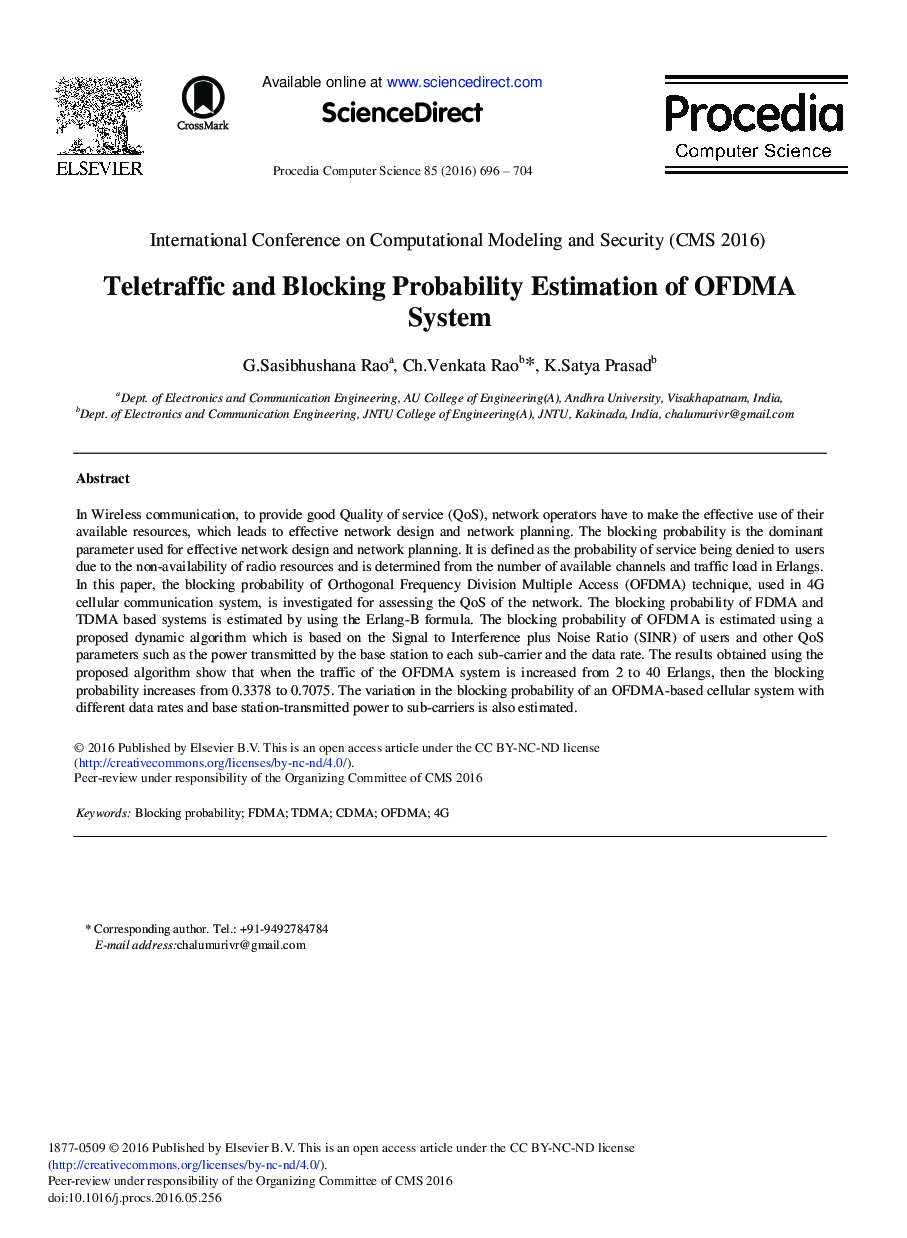| Article ID | Journal | Published Year | Pages | File Type |
|---|---|---|---|---|
| 488524 | Procedia Computer Science | 2016 | 9 Pages |
In Wireless communication, to provide good Quality of service (QoS), network operators have to make the effective use of their available resources, which leads to effective network design and network planning. The blocking probability is the dominant parameter used for effective network design and network planning. It is defined as the probability of service being denied to users due to the non-availability of radio resources and is determined from the number of available channels and traffic load in Erlangs. In this paper, the blocking probability of Orthogonal Frequency Division Multiple Access (OFDMA) technique, used in 4G cellular communication system, is investigated for assessing the QoS of the network. The blocking probability of FDMA and TDMA based systems is estimated by using the Erlang-B formula. The blocking probability of OFDMA is estimated using a proposed dynamic algorithm which is based on the Signal to Interference plus Noise Ratio (SINR) of users and other QoS parameters such as the power transmitted by the base station to each sub-carrier and the data rate. The results obtained using the proposed algorithm show that when the traffic of the OFDMA system is increased from 2 to 40 Erlangs, then the blocking probability increases from 0.3378 to 0.7075. The variation in the blocking probability of an OFDMA-based cellular system with different data rates and base station-transmitted power to sub-carriers is also estimated.
